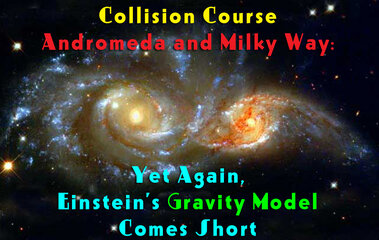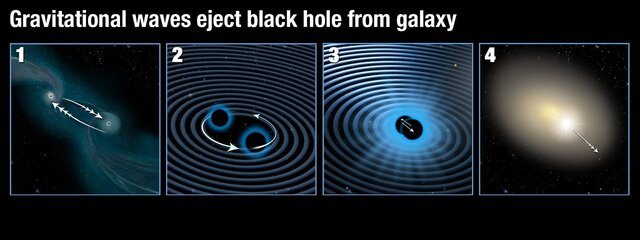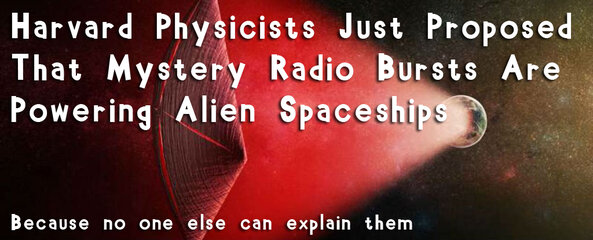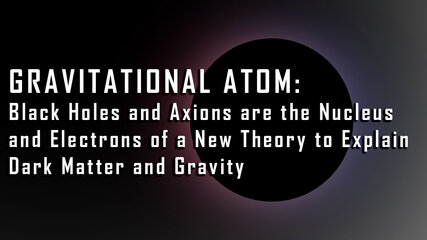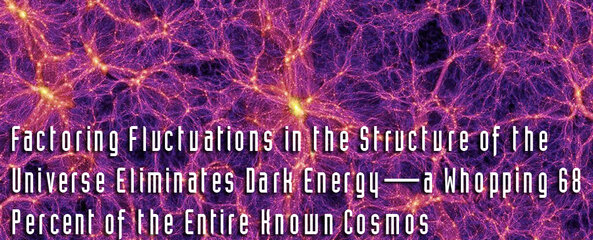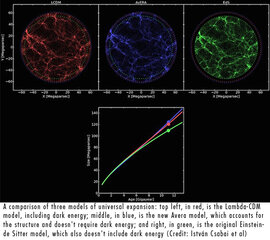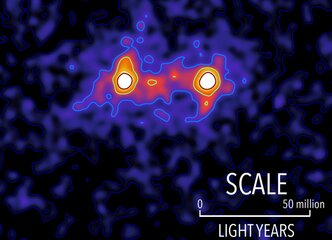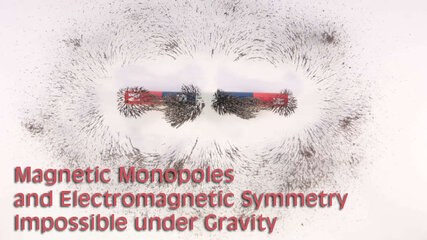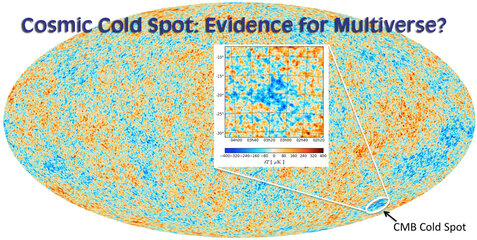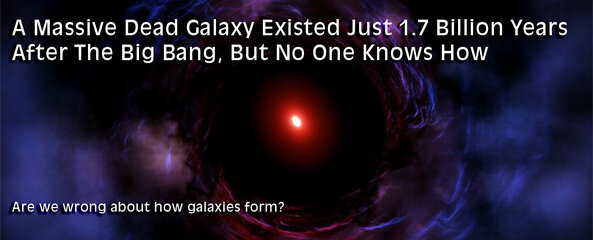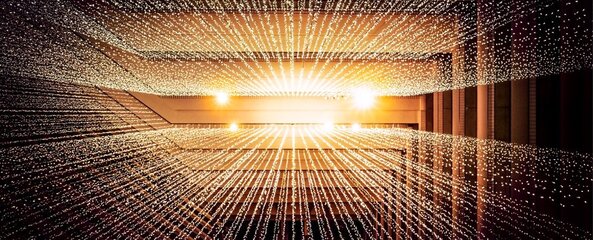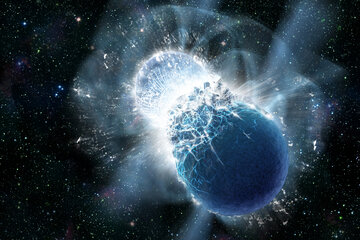- Messages
- 2,145
- Reaction score
- 5
- Points
- 28
- Thread Starter
- #141
If you spin an umbrella under a pouring rain, you'd have all the fun of seeing droplets of rain spinning away so fast from the edges of the umbrella.
Now let's go a little further and think about the speed by which those droplets are spinning away in the shape of a ring: under the basic laws of motion and gravity, we would have a figure that adequately accounts for them.
Now let's take this a heck further and assume the umbrella is the Milky Way galaxy, and let's add another one to stand for the Andromeda galaxy, our twin galaxy nearby. For the droplets, let smaller galaxies take their places. Hold the picture in your head and let's say we have the mathematics that should describe them. All good so far, except this: in the real world (or universe if you are up to it), the mathematics fail in accounting for the way those ring of galaxies are flying away from the Milky Way and the Andromeda galaxy. So what gives?
The following is a good description of this current headache from Einstein's General Theory of Relativity describing the physics of gravity in the universe. And bear in mind that not only this event of rebellious spinning galaxies, but also the behavior of galaxy spin in general are keeping cosmologists busy these days, either excited to find they're on the verge of new science, or frustrated at the possible dead corners within their lifetime.
Let's go back to our spinning droplets and umbrella—our Milky Way, Andromeda, and those little galaxies really.
So scientists have discovered that a gigantic ring of galaxies stretching 10 million light-years wide is speeding away from our own galaxy so fast, our current physics models can't explain it.
Describing the structure as expanding rapidly like a "mini Big Bang," the team thinks it was formed by a near-miss between the Milky Way and our neighboring galaxy, Andromeda, which created a 'sling-shot' of several smaller galaxies. The only problem is the result is at odds with the conditions predicted by Einstein's theory of relativity.
"If Einstein's gravity were correct, our galaxy would never come close enough to Andromeda to scatter anything that fast," says one of the team, Hongsheng Zhao from the University of St Andrews in Scotland.
Zhao and his team have been investigating the movements of a ring of small galaxies in the Local Group region of the Universe—a group of at least 54 galaxies, which has its two largest galaxies, the Milky Way and the Andromeda Galaxy, roughly at its center.
The Milky Way is currently about 2.5 million light-years away from Andromeda, but our neighboring galaxy is careening towards us at speeds of roughly 402,336 km/h (250,000 mph).
Based on Einstein's theory of relativity, astronomers estimate that 3.75 billion years from now, the Milky Way and Andromeda will collide, and in the billions of years that follow, the two will be ripped apart to form a brand new galaxy.
But have these two galaxies already experienced a near-miss?
Back in 2013, Zhao and his colleagues suggested that 7 to 11 billion years ago, the Milky Way and the Andromeda Galaxy came scarily close to each other, resulting a "tsunami-like wake" in space that would have flung smaller galaxies out into their current positions.
You can see a more recent example of this in the near-miss of two spiral galaxies, NGC 5426 and NGC 5427.
Having investigated this hypothesis further, the team now says the current velocities of these galaxies agree with this scenario - they appear to be speeding away from us so fast, our current physics models can't explain it.
"The high galactocentric radial velocities (GRVs) of some Local Group galaxies must have been caused by forces acting on them that our model does not account for," they conclude in their paper.
Not only that, but these galaxies exist on the exact same plane of the Universe as the Milky Way and the Andromeda Galaxy, which is unlikely to be a coincidence, they argue.
"The ring-like distribution is very peculiar. These small galaxies are like a string of raindrops flung out from a spinning umbrella," says one of the researchers, Indranil Banik.
"I found there is barely a 1 in 640 chance for randomly distributed galaxies to line up in the observed way. I traced their origin to a dynamical event when the Universe was only half its present age."
The problem with this scenario is that not only does Einstein's theory of relativity fail to explain the velocities of these galaxies, it also states that this near-miss should have resulted in the merge of the Milky Way and the Andromeda Galaxy billions of years ago—which obviously never happened.
The reason our current models of gravity require this to have happened is because of one of the most controversial parts of Einstein's theory—dark matter.
Einstein's theory of relativity is about as robust as theories get in terms of predicting the behavior of our Universe, but several major gravitational effects cannot be explained unless we shoehorn this strange and frustratingly elusive form of matter into the mix.
Thought to make up more than 80 percent of the mass of the entire Universe, dark matter has yet to be directly observed, and it's not for a lack of effort—a recent US$10 million experiment to find traces of dark matter particles failed to find anything after an exhaustive 20-month search.
But the way that light bends as it travels through the cosmos, and the peculiar way galaxies rotate, cannot be explained without the influence of dark matter in the Universe.
According to Zhao and his team, we could be looking at two possibilities here—either Einstein's theory of relativity is fine, and there's some other explanation for why this galaxy ring is speeding so fast (and why we haven't been able to detect dark matter), or our current model of gravity needs to be revised.
"Several aspects of the spatial distribution of these galaxies would be expected to occur if there was a past close MW-M31 flyby," the team concludes in a second study released on their latest findings.
"Such an event only makes sense in the context of certain modified gravity theories, where galaxies lack massive dark matter halos and their associated dynamical friction in close encounters, which would otherwise cause a merger."
The hypothesis recalls another recent paper that argued our current understanding of gravity is wrong.
Last year, physicist Erik Verlinde from the University of Amsterdam suggested that gravity isn't a fundamental force of nature at all, but is instead an 'emergent phenomenon' of something we've yet to define—just as temperature is an emergent phenomenon of the movement of particles.
As Fiona MacDonald reported at that time, Verlinde argues that if we only proposed dark matter to make up for an inconsistency with gravity, then maybe the issue isn't dark matter at all—maybe the problem is that we don't really understand how gravity works.
To be clear, both Zhao's team and Verlinde's conclusions are just hypotheses right now, and we have a long way to go before we start tearing apart the foundations of modern physics.
But no one can deny that there are some serious holes in our current understanding of the Universe, not least of which is the fact that gravity and other aspects of general relativity don't gel with quantum mechanics, which has led researchers to seek out a new 'theory of everything' that bridges the gap between the two.
When they were investigating the hypothesised 'near-miss' of Andromeda and the Milky Way back in 2013, Zhao and his team found that a different model of gravitational behaviour—known as Milgrom's Modified Newtonian Dynamics (MOND)—explained the movements of nearby galaxies better than the standard model of physics did.
We'll have to wait and see where all this leads, but it's pretty cool to think that we're likely to see some big things happen in theoretical physics in the decades to come—whether Einstein was right or not.
Zhao and his team's latest findings have been published in two papers, one in Monthly Notices of the Royal Astronomical Society, and another that has so far only been released on the pre-print website, arXiv.org.
This Gigantic Ring of Galaxies Could Bring Einstein's Gravity Into Question
Attachments
Last edited:

